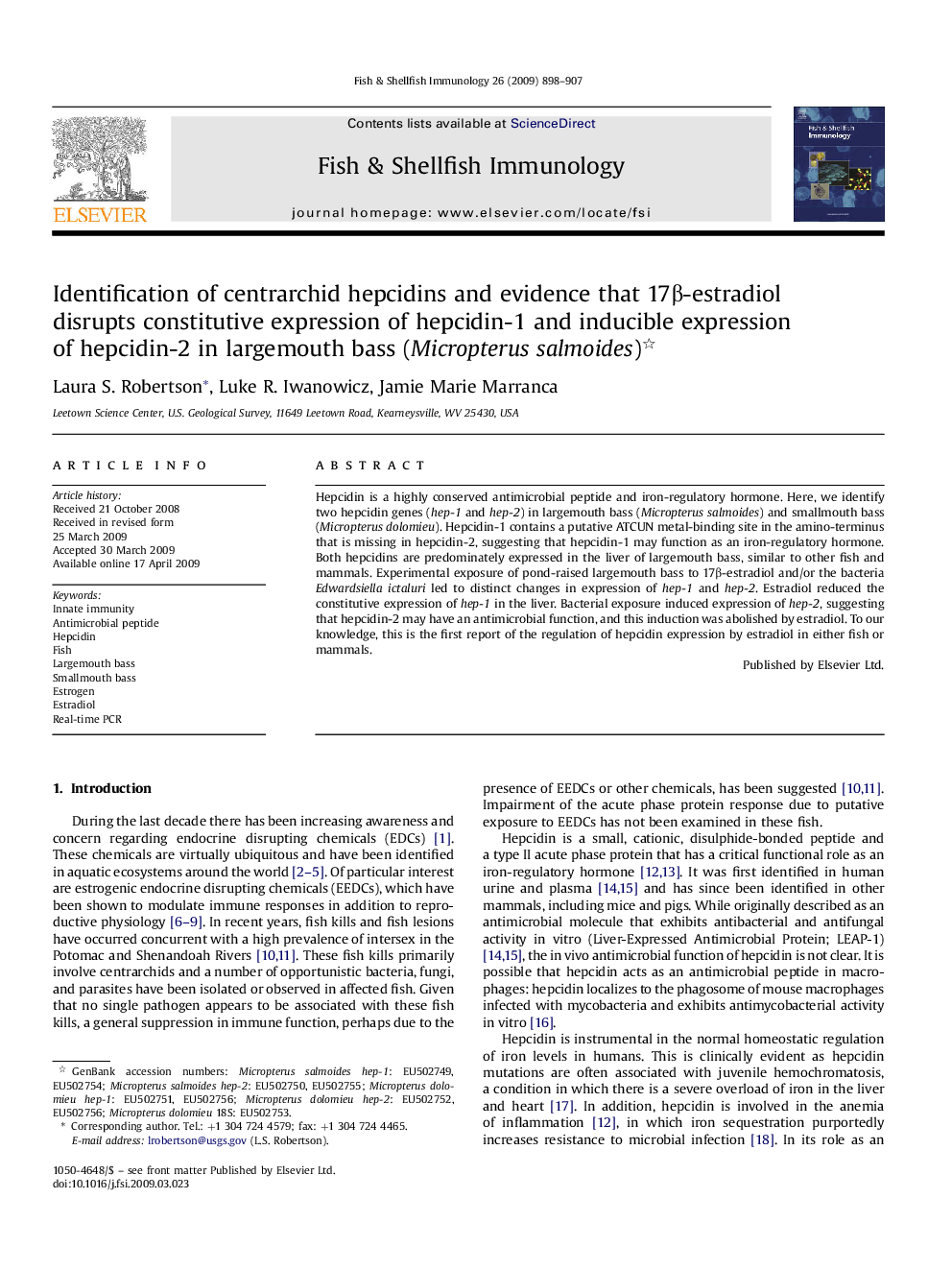| Article ID | Journal | Published Year | Pages | File Type |
|---|---|---|---|---|
| 2433164 | Fish & Shellfish Immunology | 2009 | 10 Pages |
Hepcidin is a highly conserved antimicrobial peptide and iron-regulatory hormone. Here, we identify two hepcidin genes (hep-1 and hep-2) in largemouth bass (Micropterus salmoides) and smallmouth bass (Micropterus dolomieu). Hepcidin-1 contains a putative ATCUN metal-binding site in the amino-terminus that is missing in hepcidin-2, suggesting that hepcidin-1 may function as an iron-regulatory hormone. Both hepcidins are predominately expressed in the liver of largemouth bass, similar to other fish and mammals. Experimental exposure of pond-raised largemouth bass to 17β-estradiol and/or the bacteria Edwardsiella ictaluri led to distinct changes in expression of hep-1 and hep-2. Estradiol reduced the constitutive expression of hep-1 in the liver. Bacterial exposure induced expression of hep-2, suggesting that hepcidin-2 may have an antimicrobial function, and this induction was abolished by estradiol. To our knowledge, this is the first report of the regulation of hepcidin expression by estradiol in either fish or mammals.
